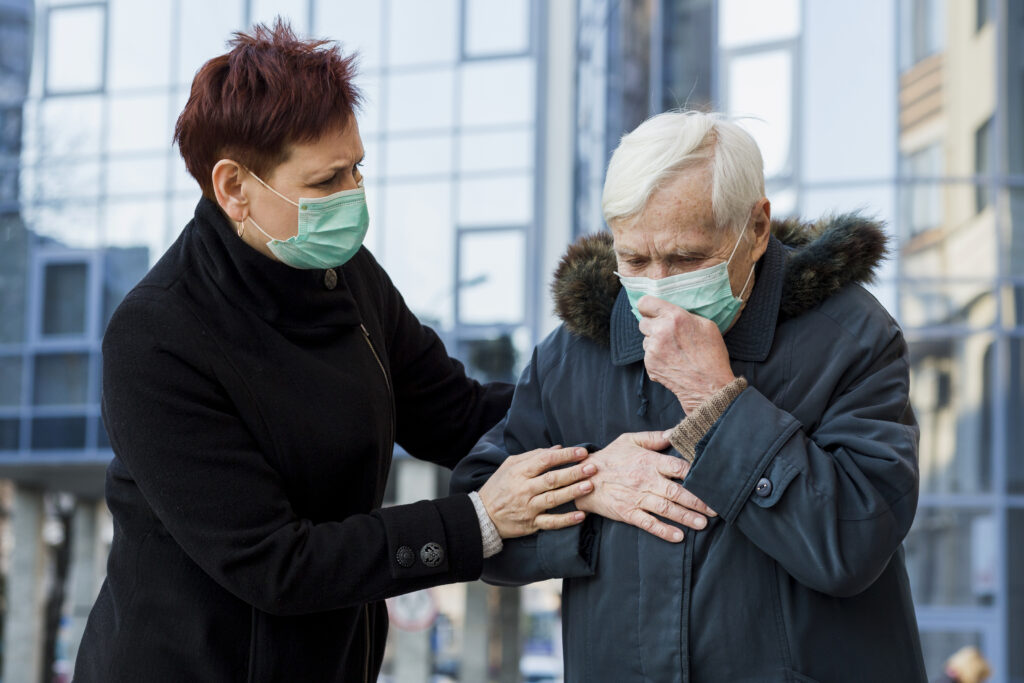
- 🧠 Introduction:
- 🚶♂️ What is Walking Pneumonia?
- 😷 Common Symptoms to Watch For "Symptoms of walking pneumonia :
- 📈 Walking Pneumonia Cases in the U.S. – 2024–2025 Update
- 🧬 Who Is Most at Risk?
- 🤧 How Does It Spread?
- 💊 Treatment & Recovery
- 🛡️ Prevention Tips
- 🧠 Final Thoughts
- FAQs: Walking Pneumonia in the U.S. (2025) :
🧠 Introduction:
In recent months, health experts across the U.S. have reported a steady rise in walking pneumonia cases — especially among children, teens, and young adults. While not as dangerous as typical pneumonia, this milder form of infection can still leave you coughing, tired, and run-down for weeks.
Here’s everything you need to know about walking pneumonia in the U.S., its symptoms, how it spreads, and what recent data tells us.
🚶♂️ What is Walking Pneumonia?
Walking pneumonia is a mild lung infection, often caused by Mycoplasma pneumoniae bacteria. Unlike typical pneumonia, those infected can usually carry on with daily activities — hence the name “walking” pneumonia.
Though it sounds harmless, walking pneumonia can last for weeks and be highly contagious, especially in closed environments like schools, college dorms, and military camps.
😷 Common Symptoms to Watch For
“Symptoms of walking pneumonia :
It confused with those of a common cold or mild flu. Be aware of the following signs:
Persistent dry cough
Low-grade fever
Fatigue and weakness
Sore throat
Mild chest pain
Headache
Chills
Sometimes: rash or ear pain
Most people feel “off” but don’t always feel sick enough to visit a doctor — which is why early cases often go unnoticed and continue to spread.
📈 Walking Pneumonia Cases in the U.S. – 2024–2025 Update
According to the Centers for Disease Control and Prevention (CDC) and various health studies:
Each year, 2 million people in the U.S. are affected with walking pneumonia.
A significant surge occurred in 2023–2024, especially in pediatric patients.
States like Ohio, Georgia, and California saw the most cases, with Ohio reporting over 140+ pediatric infections in just one county (late 2023).
Recent data shows a decline in new cases by mid-2025, though some hotspots still remain.
These trends follow the expected 3–7 year cycle of Mycoplasma pneumonia outbreaks, which was disrupted during the COVID-19 lockdowns — leaving populations more vulnerable.
🧬 Who Is Most at Risk?
Although It can affect anyone :
Children aged 5–15
College students
Young adults
Healthcare and military personnel
Individuals with weakened immune systems
🤧 How Does It Spread?
Walking pneumonia is airborne and spreads through:
Coughs and sneezes
Close contact in shared indoor spaces
Touching surfaces contaminated by droplets
Because symptoms take 1 to 4 weeks to appear, people often spread it before they even know they’re sick.
💊 Treatment & Recovery
The good news: Most cases are treatable at home.
Antibiotics like:
Azithromycin
Doxycycline
Erythromycin
…are effective if prescribed early.
Supportive care includes:
Plenty of rest
Staying hydrated
Using over-the-counter pain relievers (like ibuprofen)
Avoiding smoking and polluted air
Recovery typically takes 1–3 weeks, but fatigue and cough may linger longer.
🛡️ Prevention Tips
To reduce your risk of catching or spreading walking pneumonia:
✅ Wash your hands regularly
✅ Avoid close contact with sick individuals
✅Use a tissue to cover your mouth and nose when you cough or sneeze.
✅ Clean shared surfaces often
✅ Support your immunity with balanced meals and proper rest.
🧠 Final Thoughts
Walking pneumonia may not knock you off your feet — but it can quietly disrupt your health, school, or work life if left untreated. While the 2024–2025 spike in U.S. cases is calming down, it’s still crucial to remain vigilant.
If you or your child experiences a lingering cough or fatigue, don’t ignore it — check with your doctor. Early diagnosis leads to quicker recovery and fewer complications.
FAQs: Walking Pneumonia in the U.S. (2025) :
- What is walking pneumonia?
Walking pneumonia is a milder form of pneumonia, Unlike typical pneumonia, symptoms are less severe, and most people can continue daily activities while recovering. - How common is walking pneumonia in the U.S. in 2025?
As of 2025, around 2 million cases of walking pneumonia are reported annually in the United States. - Who is most at risk?
Although anyone can get walking pneumonia, it’s most common in children, teens, and adults under 40—especially those in schools, colleges, or crowded environments. - What are the symptoms of walking pneumonia?
Common symptoms include:
Persistent dry cough
Mild fever and chills
Fatigue
Headache
Sore throat
Chest discomfort
These symptoms are often mistaken for a cold or mild flu.
- How is walking pneumonia spread?
The illness spreads via airborne droplets expelled during coughing or sneezing. Close interactions with an infected person make transmission more likely. - How is it diagnosed?
Doctors usually diagnose walking pneumonia based on symptoms, medical history, and sometimes a chest X-ray or blood test. - Is walking pneumonia serious?
While usually mild, it can become more serious if left untreated or if it affects older adults or people with weakened immune systems. - What is the treatment?
Treatment may include:
Antibiotics (if bacterial)
Rest and fluids
Over-the-counter medications for symptom relief
- Can walking pneumonia be prevented?
Yes, by:
“Following healthy hygiene habits like handwashing regularly and shielding your mouth and nose during coughs or sneezes.”
Avoiding close contact with infected individuals
Strengthening the immune system with proper diet, sleep, and exercise
- Should I see a doctor if I think I have walking pneumonia?
Yes. If your symptoms last more than a week or worsen, it’s important to consult a healthcare provider for proper diagnosis and treatment.
